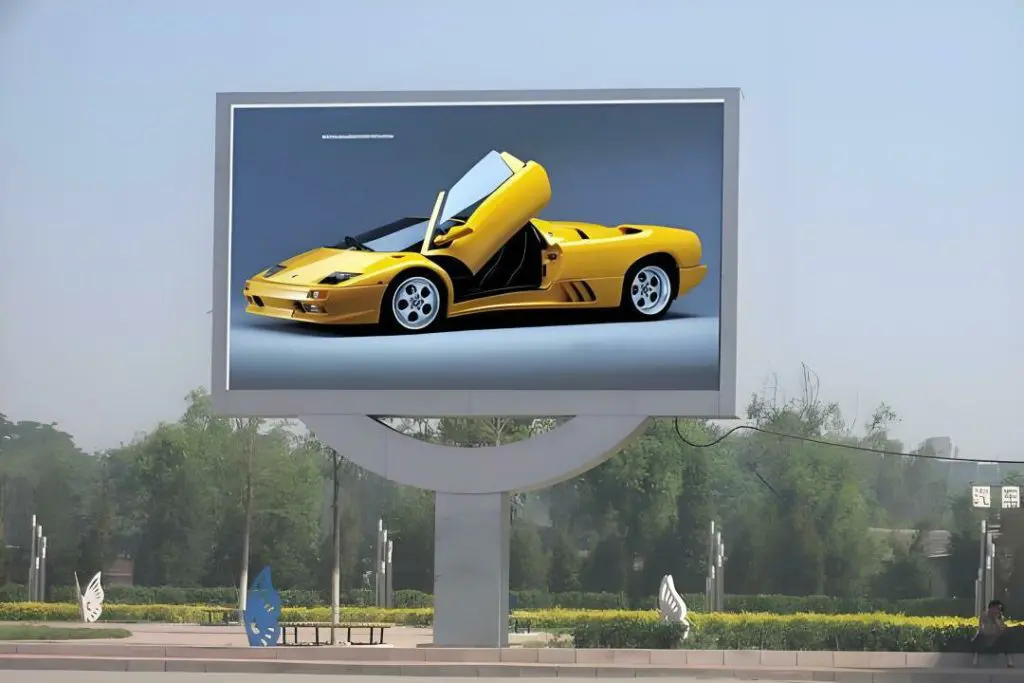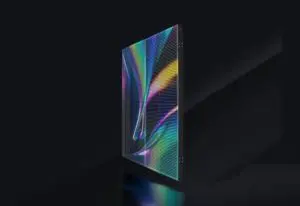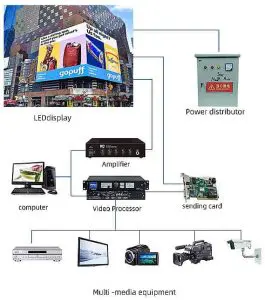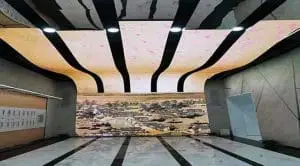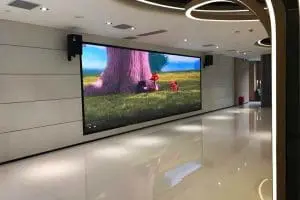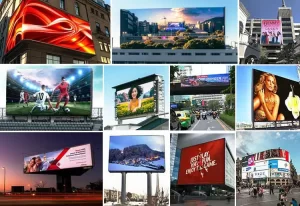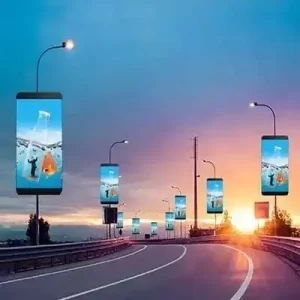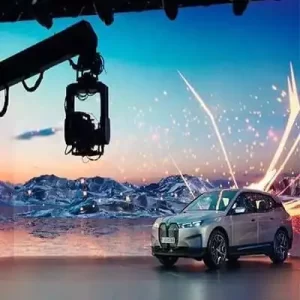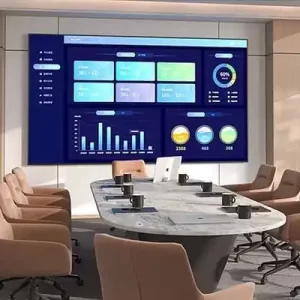A digital LED screen is a cutting-edge display technology designed to deliver high-quality visuals for advertising, communication, and entertainment. These screens, made of light-emitting diodes (LEDs), are widely used across industries due to their brightness, durability, and versatility. From retail stores and stadiums to public spaces and corporate offices, digital LED screens are transforming the way information is presented and consumed.
In this article, we’ll explore what digital LED Display screens are, their key features, benefits, applications, and why they are the go-to solution for modern display needs.
What Is a Digital LED Screen ?
A digital LED screen is a display made of LED panels that emit light to produce stunning visuals in both indoor and outdoor environments. Unlike traditional screens, digital LED screens offer vivid colors, high brightness, and seamless displays, making them the preferred choice for dynamic content delivery.
How Do Digital LED Display Screens Work ?
A digital LED Display screen is made up of thousands (or millions) of tiny LED lights, each representing a pixel. These LEDs can emit red, green, or blue light to create a full spectrum of colors. The screens are modular, meaning multiple panels can be combined to form displays of various sizes and shapes.
Key Features of Digital LED Screens
Digital LED screens are known for their advanced features, which include:
1. High Resolution
With pixel pitches as low as P0.6–P5 for indoor use and P2–P16 for outdoor use, digital LED screens provide sharp and detailed visuals, even at close viewing distances.
2. Brightness and Visibility
Digital LED screens offer brightness levels up to 5,000 nits or more, ensuring clear visibility in bright sunlight or well-lit indoor areas.
3. Seamless Design
The modular design of LED panels eliminates gaps, creating a smooth, uninterrupted display perfect for large video walls or digital billboards.
4. Durability
Digital LED screens are built to withstand harsh conditions, featuring:
- Weatherproof outdoor screens with IP66+ ratings.
- Impact-resistant indoor screens to handle frequent use.
5. Energy Efficiency
Compared to traditional display systems, LED screens consume less energy, making them environmentally friendly and cost-effective.
6. Customization
LED screens can be customized to fit any requirement, from flat video walls to curved, transparent, or flexible designs, making them suitable for creative and unconventional layouts.
7. Long Lifespan
LED screens are designed for long-term use, offering 50,000–100,000 hours of operational life.
8. High Refresh Rates
With refresh rates exceeding 3,840 Hz, digital LED screens deliver smooth motion, making them ideal for live streaming, sports, and video playback.
Benefits of Digital LED Display Screens
Digital LED screens offer several advantages over traditional display systems, making them an essential tool for modern communication:
1. Superior Visual Impact
With their vibrant colors, high brightness, and seamless design, LED screens capture attention and leave a lasting impression, whether used for advertising, presentations, or entertainment.
2. Versatility
LED screens are suitable for a wide range of applications, including:
- Advertising and promotions.
- Live events and performances.
- Information delivery in public spaces.
- Interactive displays and kiosks.
3. Real-Time Content Updates
Digital LED Display Screens allow for real-time content updates via remote control systems, making it easy to change messages, visuals, or schedules instantly.
4. Cost-Effectiveness
While the initial investment can be high,LED screens have low maintenance costs and a long lifespan, offering excellent ROI over time.
5. Enhanced Audience Engagement
Through dynamic content such as animations, videos, and live feeds, LED screens engage audiences more effectively than static displays.
6. Weather and Impact Resistance
Outdoor LED screens are built to withstand extreme weather conditions, while indoor screens are durable enough for high-traffic areas.
Applications of LED Display Screens
Digital LED Display screens are versatile and used in a variety of industries and environments:
1. Advertising and Marketing
- Digital Billboards: Showcase advertisements in high-traffic areas with rotating content.
- Retail Displays: Promote new products, sales, and offers in stores or malls.
2. Events and Entertainment
- Concerts and Performances: Display live feeds, animations, or event branding.
- Sports Venues: Show live scores, replays, and advertisements.
3. Corporate Use
- Conference Rooms: Replace traditional projectors with high-resolution LED walls.
- Lobbies and Reception Areas: Display corporate branding and announcements.
4. Public Spaces
- Transportation Hubs: Provide real-time schedules, announcements, and maps in airports, train stations, and bus terminals.
- City Squares: Share public announcements, weather updates, and news.
5. Education
- Lecture Halls: Deliver clear and engaging presentations.
- Campus Displays: Share schedules, events, and important announcements.
6. Hospitality and Tourism
- Hotels: Showcase amenities, dining options, and promotions in lobbies.
- Tourist Attractions: Provide maps, videos, and interactive guides.
7. Healthcare
- Hospitals: Display appointment schedules, health tips, and emergency messaging in waiting areas.
Types of LED Screens
The type of LED screen you choose depends on your specific needs. Here are the most common types:
1. Indoor LED Screens
- Best For: Retail stores, corporate offices, malls, and auditoriums.
- Features: High resolution (P0.6–P5), lower brightness levels, sleek design.
2. Outdoor LED Screens
- Best For: Advertising billboards, stadiums, and public spaces.
- Features: High brightness (4,000–10,000 nits), weatherproof, durable.
3. Transparent LED Screens
- Best For: Glass facades and storefronts.
- Features: Semi-transparent design, allowing natural light to pass through.
4. Curved LED Screens
- Best For: Unique architectural designs or immersive displays.
- Features: Flexible panels for creative layouts.
5. Flexible LED Screens
- Best For: Creative installations and custom designs.
- Features: Bendable panels for unconventional shapes and structures.
6. Rental LED Screens
- Best For: Temporary uses like events, trade shows, or concerts.
- Features: Portable and easy to set up.
Factors to Consider When Choosing LED Screen
When selecting LED screen, consider the following:
1. Pixel Pitch
The pixel pitch determines the resolution of the screen.
- P0.6–P5: For close viewing (indoor use).
- P2–P16: For long-distance viewing (outdoor use).
2. Brightness
- Indoor Screens: 800–1,500 nits.
- Outdoor Screens: 4,000–10,000 nits for visibility in sunlight.
3. Screen Size
Choose a size that fits the space and ensures visibility for the audience.
4. Durability
For outdoor use, ensure the screen is weatherproof with an IP66 or higher rating.
5. Energy Efficiency
Opt for energy – efficient screens to keep operating costs low.
Cost of Digital LED Screens
The cost of a digital LED screen depends on its size, resolution, and features. Below is a general price range:
| Screen Type | Pixel Pitch | Cost per m² (USD) | Best For |
|---|---|---|---|
| Indoor LED Screen | P0.6–P5 | $700–$4,000 | Retail stores, auditoriums, offices. |
| Outdoor LED Screen | P2–P16 | $800–$6,000 | Billboards, stadiums, city squares. |
| Transparent LED Screen | P3–P7 | $500–$3,000 | Storefronts, glass facades. |
| Curved LED Screen | P1.25–P6 | $1,000–$3,000 | Creative designs, immersive displays. |
| Rental LED Screen | P1.25–P4.8 | $2,500–$5,000 | Temporary events and trade shows. |









